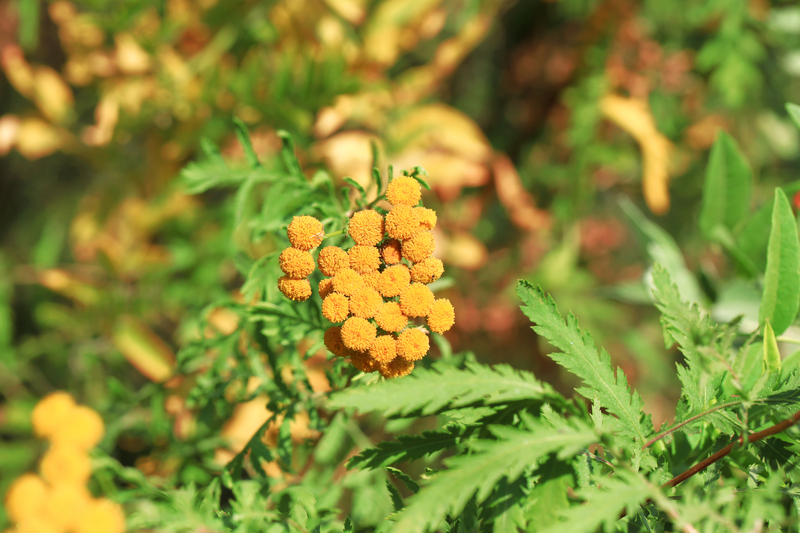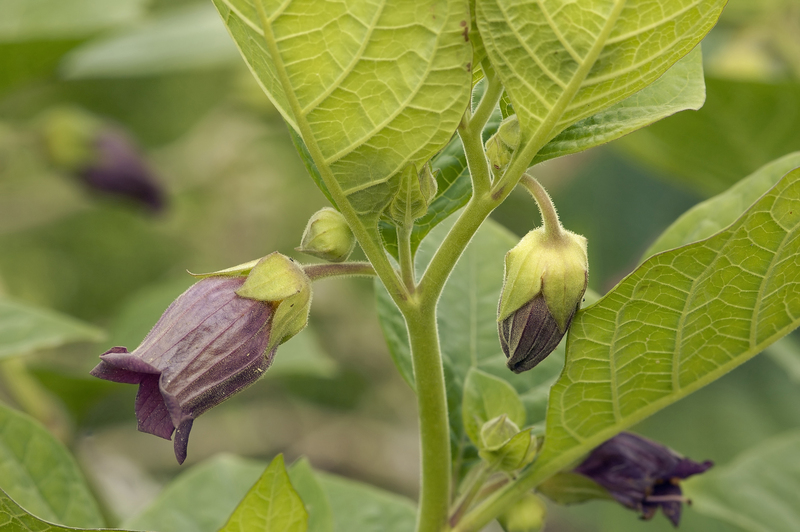Revolutionize Your Weed Control with These 3 Tips
Posted on 25/08/2025
Revolutionize Your Weed Control with These 3 Tips
Weeds are a persistent problem for gardeners, farmers, and homeowners alike. Whether you're cultivating a lush lawn, growing a vegetable patch, or maintaining commercial landscapes, controlling weeds can be both time-consuming and challenging. The good news? You can completely transform your approach to weed prevention and management by adopting new, innovative techniques. In this article, we'll dive deep into three expert weed control tips that are set to revolutionize your success in keeping weeds at bay--saving you time, money, and stress.
Why Weed Control Matters More Than Ever
Before delving into our trio of groundbreaking tips, it's important to recognize why effective weed management is so crucial:
- Weeds compete with your desired plants for water, sunlight, and nutrients.
- Unmanaged weeds can harbor pests and diseases that threaten your entire garden or crop.
- Allowing weeds to go unchecked results in greater seed dispersal, leading to even more weed growth in future seasons.
- Persistent weeds decrease property value and curb appeal.
Clearly, tackling weeds isn't just about aesthetics--it's a key part of maintaining healthy, productive environments.

Tip #1: Embrace Preventive Weed Control Strategies
Stop Weeds Before They Start
Prevention is always better than cure in weed management. The most effective way to deal with unwanted plants is to keep them from germinating or establishing in the first place. Here's how you can give your weed control efforts a preventive edge:
- Mulching: Lay a thick layer of organic mulch (like wood chips, bark, straw, or compost) or use landscape fabric to block sunlight and prevent weeds from sprouting. Mulch also boosts soil health and moisture retention.
- Pre-emergent Herbicides: Apply these products at the right seasonal window to stop weed seeds from sprouting. Most lawns and gardens benefit from a spring application to target annual weeds before they appear.
- Dense Planting: Fill planting beds with healthy, vigorous crops or ground covers. Dense foliage shades the soil and makes it harder for weeds to take hold.
- Regular Maintenance: Inspect your garden or landscape weekly and remove small weed seedlings by hand before they have a chance to establish and go to seed.
Benefits of Preventive Approaches
- Saves time and effort - preventing weeds reduces the need for hours of labor later in the season.
- Less reliance on harsh chemicals, creating safer spaces for kids, pets, and pollinators.
- Improves soil and plant health by maintaining consistent conditions and reducing competition.
By making prevention your first line of defense, you're setting your weed control routine up for lasting success.
Tip #2: Modernize Your Weed Control Tools and Techniques
Leverage Innovation for Better Weed Elimination
The days of back-breaking hand-weeding and indiscriminate herbicide spraying are gone. Modern weed control solutions offer smarter, more eco-friendly ways to tackle weed infestations--even for large areas or stubborn perennial weeds. Here's how to revolutionize your weed elimination toolkit:
-
Weed Flamers and Steamers:
Tools like weed flamers use intense, targeted heat to kill weeds instantly, without chemicals. Steamers use superheated water to achieve the same effect. Both methods are excellent for hard surfaces, borders, and organic gardens. -
Battery-Powered Weeders:
Cordless, battery-operated weeders can extract even deep-rooted weeds quickly and efficiently. Many feature rotating blades or tines for minimal soil disturbance. -
Robotic Weeders:
The latest in autonomous technology, robotic weeders roll over your garden or field, distinguishing weeds from crops and pulling or cutting them automatically. This is a game-changer for larger plots or commercial operations. -
Selective Organic Herbicides:
Made with naturally derived ingredients (such as acetic acid, essential oils, or fatty acids), new-generation organic herbicides can be used safely around fruits, vegetables, and ornamentals. -
Precision Spot Spraying:
Instead of broadcast spraying, use wands or applicators with shields to deliver herbicide only to target weeds, minimizing off-target damage and environmental impact.
Modern equipment and techniques bring greater efficiency, safer applications, and more sustainable results for controlling unwanted plants.
How Innovation Improves Overall Weed Control
- Reduced labor and physical strain for gardeners and groundskeepers.
- Lower long-term costs as tools pay for themselves versus repeated chemical purchases.
- Increased efficacy--new devices remove roots, not just top growth, and are better for the environment.
- Enable targeted control methods for sensitive areas, such as vegetable patches, playgrounds, and pollinator gardens.
Adopting these tools isn't just about being trendy--it's about making your weed control faster, easier, and much more effective.
Tip #3: Master Sustainable & Integrated Weed Management
Combine Methods for Long-Term Success
Sustainable weed control goes beyond using a single method or chemical. Integrated Weed Management (IWM) brings together cultural, mechanical, biological, and chemical strategies for comprehensive, long-lasting results while maintaining environmental health. Here's how to create your own sustainable, integrated plan:
-
Cultural Controls:
Rotate crops, adjust mowing heights, and vary planting times to disrupt weed life cycles. Choose competitive plant varieties that shade soil effectively. -
Mechanical Controls:
Use hand-pulling, hoeing, mowing, flame weeding, or tilling to physically remove weeds before they set seed. -
Biological Controls:
Encourage natural weed predators (like certain insects) or use bioherbicides--microorganisms specifically formulated to attack weed species without harming crops. -
Chemical Controls:
Use herbicides only when necessary and always follow label directions. Rotate products to avoid resistance and spot-treat rather than widespread spraying.
Best Practices for Integrated & Sustainable Weed Management
- Adapt your approach throughout the seasons--some techniques work best in spring or fall.
- Keep records of what works each year for your conditions and adjust your plan accordingly.
- Prioritize soil health with composting, cover crops, and reduced tillage. Healthy soils support desirable plants and naturally outcompete weeds.
- Monitor results and tweak your routine for continuous improvement.
When you integrate multiple methods and stay proactive, you set yourself up for a future where weeds are a manageable nuisance, not a chronic headache.
Bonus Tip: Know Your Enemy--Identify Your Weeds
Knowledge really is power when it comes to effective weed management. Not all weed species are created equal! By properly identifying the main weed types in your lawn or garden, you can:
- Select the right control approach (some weeds reproduce by seed, others by roots or rhizomes).
- Time your interventions for maximum impact (such as early spring for crabgrass or late summer for dandelion control).
- Avoid ineffective treatments (for instance, many broadleaf weed killers won't touch grassy weeds like quackgrass).
Take photos and use weed identification guides or apps. When in doubt, consult with local cooperative extension offices or professional landscapers.

Frequently Asked Questions about Weed Control
What is the most effective weed control method?
The most effective approach is integrated weed management--using a combination of cultural, mechanical, biological, and chemical measures tailored to your site and weed species. Consistency and early intervention are key.
How can I prevent weeds naturally?
Mulching, dense plantings, proper watering, crop rotation, and regular inspections are all powerful natural tactics for weed prevention.
Are organic weed control methods as effective as chemicals?
Modern organic weed control solutions can be very effective, especially when used alongside mechanical and cultural methods. They may require more frequent application but lead to a healthier ecosystem over time.
How do I control weeds without harming my lawn or garden?
Use precision tools and spot treatments, select selective herbicides if needed, and avoid over-tilling which can disturb beneficial microflora as well as dormant weed seeds.
Conclusion: Take Weed Control to the Next Level Today
With persistent weeds, inaction can quickly lead to disaster--but outdated or overly harsh tactics are no longer your only options. By adopting preventive strategies, harnessing the latest weed control tools, and integrating sustainable methods, you can dramatically improve your effectiveness while protecting the environment and boosting the health of your soil and plants.
Ready to revolutionize your weed control? Whether you're a homeowner, a professional landscaper, or a commercial grower, these innovative, practical tips will help you stay ahead of the weeds--and enjoy a beautiful, productive outdoor space all season long!
- Embrace prevention
- Use modern tech and tools
- Adopt integrated, sustainable practices
Start today and experience the difference in your weed management results!

